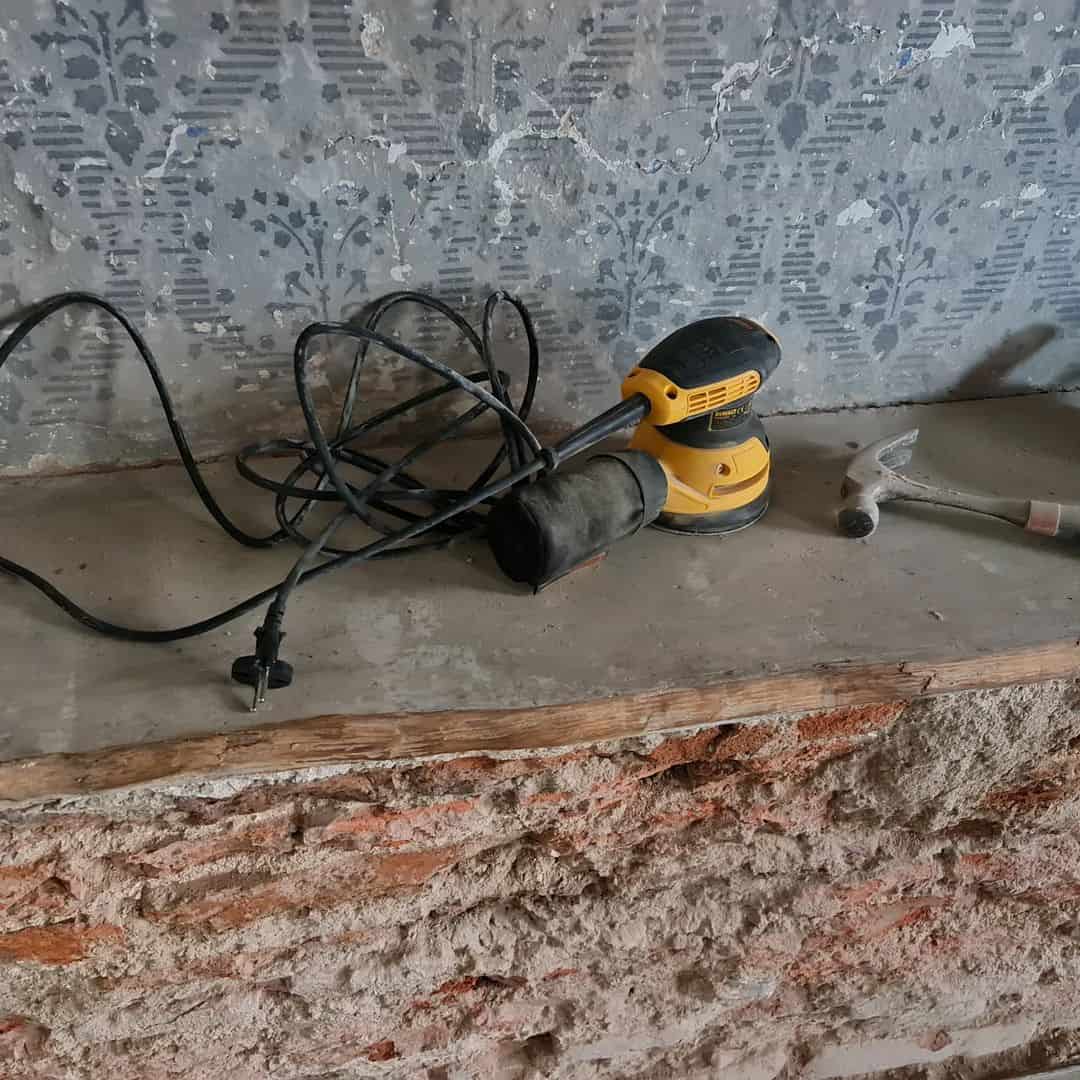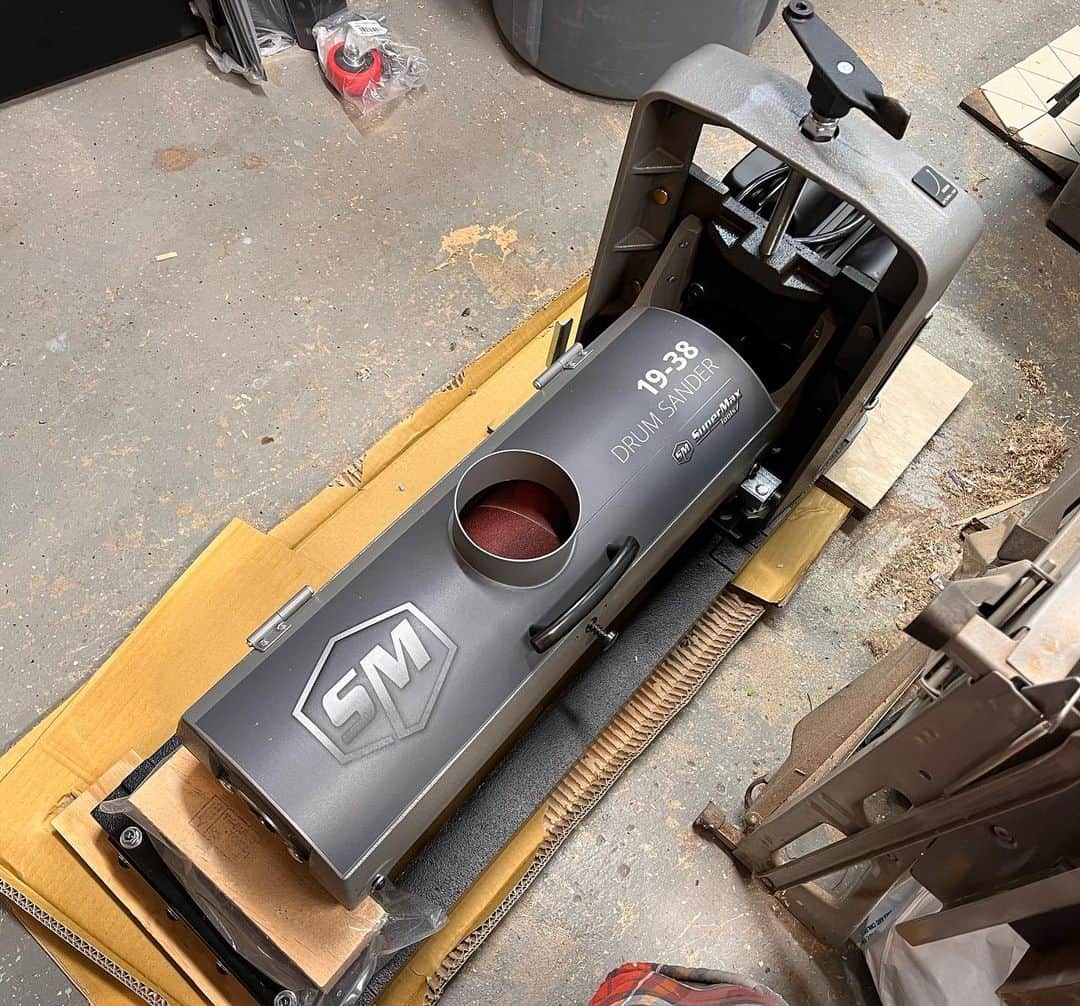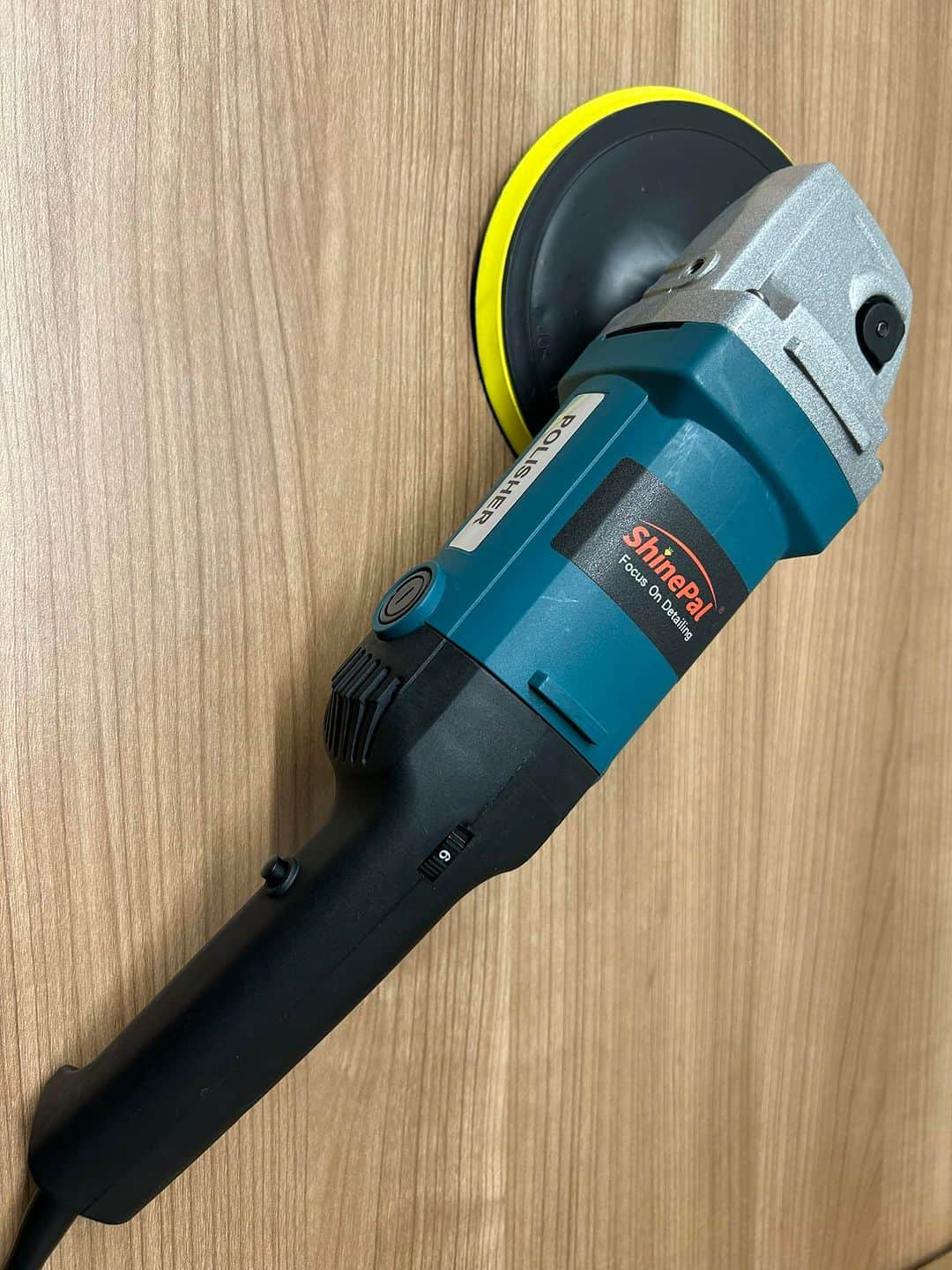Do you have to sand down a wooden project or floor but need to know what tool to use? Is a drum sander or an orbital sander the best option for the job?
Well, this article will help you decide! Drum sanders and orbital sanders are great tools for smoothing out wood or other materials, but each type has its benefits and drawbacks.
Keep reading to learn the differences between drum sanders and orbital sanders so you can make the best decision when sanding your next project.
Table of Contents
Drum Sander vs. Orbital Sander: Which Is Better?
What Is a Drum Sander?
A drum sander is a power tool designed for shaping and smoothing large wood surfaces, including furniture or hardwood floors. It’s typically used to level out large areas or remove a lot of material.
Drum sanders consist of a motor, belt, rollers, and an abrasive surface (grits) —usually a sandpaper drum that rotates. The sandpaper wraps around the drum, the drum spins, and the rollers press down to keep the sandpaper in contact with the surface. This allows you to sand large areas much faster than other sanders.
Depending on your needs and budget, there are three types of Drum sander.
The traditional clamp bar is the most common, relatively economical choice. An expandable belt sander offers a more expensive option that works with centrifugal force. The cam-lock systems utilize an old technology but remain popular today with their slots accommodating the sanding paper.
Benefits of Using a Drum Sander
The most significant benefit of using a drum sander is its speed — you can level out uneven surfaces very quickly as the drum spins.
- Quickly levels out uneven surfaces.
- Removes a lot of material in one go
- Ideal for preparing surfaces for staining or painting
- Easily removes layers of stains and finishing products.
- Faster to work with compared to orbital sanders.
Drawbacks of Using a Drum Sander
The biggest drawback of drum sanders is their size and weight. They are much larger and heavier than other sanders, making them difficult to maneuver.
- Difficult to get into tight corners.
- It can take a long time to finish a project since it can only sand in one direction.
- It can be expensive when compared to other types of sanders.
- It can cause unnecessary damage if used on softwoods or surfaces that need a lighter touch.
- Regularly replacing sandpaper can become costly over time.
What Is an Orbital Sander?

An orbital sander is another hand-held electric tool used for smoothing out surfaces. It works much differently than a drum sander; instead of having a continuous loop of abrasive material, it has a vibrating pad that moves in an elliptical pattern. That’s why it is also called a vibrating sander.
This allows it to sand quickly and evenly, with less chance of leaving deep scratches or depressions on the surface. It’s usually used for smaller jobs where precision is essential, as it can get into tight spots that are difficult to reach with a drum sander.
Handheld devices are powerful tools that vibrate in tiny circular motions, perfect for sanding any surface quickly and efficiently.
Benefits of Using an Orbital Sander
The main benefit of using an orbital sander is its precision — you can get into tight corners and create smooth, even surfaces with minimal effort.
- Requires less force and can sand for longer without risking fatigue
- The vibrating action of the orbital sander speeds up the sanding process.
- Well-suited for jobs where you need to work against the grain of the wood.
- Ideal for sanding curved surfaces like hallways or surfaces with intricate details
- An orbital sander can create a professional, high-quality, smooth finish on the project.
- A variety of sanding discs and grits are available to accommodate different tasks.
- Typically less expensive than other sanders.
Drawbacks of Using an Orbital Sander
The biggest drawback of an orbital sander is its speed because the pad vibrates rather than rotates, and it takes a lot of time to remove material.
- Dust created by orbital sanding can be hazardous if not appropriately contained and disposed of correctly.
- It can cause damage to the surface you are sanding if not used correctly or with too much pressure.
- It can leave swirl marks on the surface, which may need to be sanded down before the final finish is applied.
- It can create heat, making it harder to use in tight spaces or on delicate surfaces.
Similarities Between Drum and Orbital Sanders

Both drum and orbital sanders are electric tools that can be used to smooth out surfaces. Both sanders use an abrasive surface to remove material from a wooden or metal surface. They both have variable speeds so the user can adjust the sanding intensity according to their project’s needs.
The basic operating principle of each sander is the same; a motor powers a sanding belt or disc, which moves over the surface of the material to be worked on.
In terms of use, both drum and orbital sanders are used for a wide range of projects. They can be used to sand wood, metal, and other materials. They can also be used to prepare surfaces for painting or staining.
Differences Between Drum and Orbital Sanders
Drum Sanders are designed with a continuous loop of abrasive material, which works by pushing against the material being sanded. This type of sander is best used for larger-scale applications such as clearing away large amounts of material or smoothing out surfaces on furniture or floors.
On the other hand, Orbital Sanders uses a vibrating pad. This constant movement gives a smooth finish without leaving any scratches or other marks on the surface.
1. Durability
Drum Sanders are more durable and heavier-duty than their orbital counterparts, meaning they can handle more strenuous jobs and will last longer.
Orbital Sanders are more lightweight, so they’re better for delicate workspaces where a heavier sander might cause damage to surrounding materials.
2. Size and Weight of the Machine
Drum Sanders is great for larger, more demanding sanding jobs. Their weight makes them ideal for tough tasks like removing old paint or as floor sanders.
Orbital Sanders are lighter and more maneuverable than Drum Sanders, making them ideal for working in tight spaces or corners. Their size makes them perfect for smaller jobs that require less power.
3. Time Taken
Drum Sanders are typically faster and more efficient when sanding large pieces of wood. Their high-powered motors enable them to quickly smooth out even the most rigid surface of the floor in a fraction of the time it would take with an orbital sander.
Orbital Sanders’ lower speed takes a huge amount of time and allows for greater control over the type of finished product. While they may take slightly longer to finish the job than their drum counterparts, orbital sanders have a more precise finish with less risk of leaving swirl marks or other imperfections on the surface.
4. Amount of Material Removed

Drum Sanders are perfect for smoothing out large surfaces and quickly removing a lot of material. They’re also great for carving shapes or creating wood, metal, or plastic contours.
Orbital Sanders are ideal for small, intricate areas requiring more precise work and less material removal. Whether you’re sanding tight corners or preparing something delicate to accept a finish, orbital sanders can do the job quickly and efficiently.
5. Noise Produced
Drum Sanders tend to be louder than orbital sanders, so it’s crucial to use hearing protection when using one.
Orbital sanders are much quieter, making them great for operations where noise needs to be kept at a minimum.
6. Working Areas
With its variable speed settings, an orbital sander is ideal for getting into tight spaces that would otherwise be difficult to sand by hand. It is also suitable for projects involving curved surfaces.
Drum sanders are great for larger areas since their more aggressive sanding action can quickly cover larger areas. They are also better for working with hard materials such as steel and aluminum.
Factors To Consider When Choosing the Proper Sander
Before sanding your floor, you should consider various factors that will determine the condition of your floor and what method would be best for it.
A drum sander is recommended if there is significant damage, such as deep scratches or dents. An orbital sander can be used for lighter sanding with no major problem area present.
When selecting the sanding equipment to use, you must determine if the floor has been sanded before and check the thickness of the edge floorboards. If you have engineered hardwood, consider how thin the top layer of wood can be sanded. An orbital sander is preferable if no primary gauges or scratches are present.
Ultimately, depending on the existing condition of your floor, it is recommended to consult flooring professionals to choose the best sanding equipment and method for refinishing your floor. This will ensure that your floor is not damaged and that any imperfections are appropriately addressed.
Conclusion
Regarding sanders, drums, and orbital sanders are two of the most popular models. Drum sanders offer high precision and a large contact area, while orbital sanders are more versatile and lighter but with less power behind them.
Both types of sander have their place in woodworking projects, depending on what you need to do. With a better understanding of the features and differences between the drum and orbital sanders, you can select the suitable model for your project.